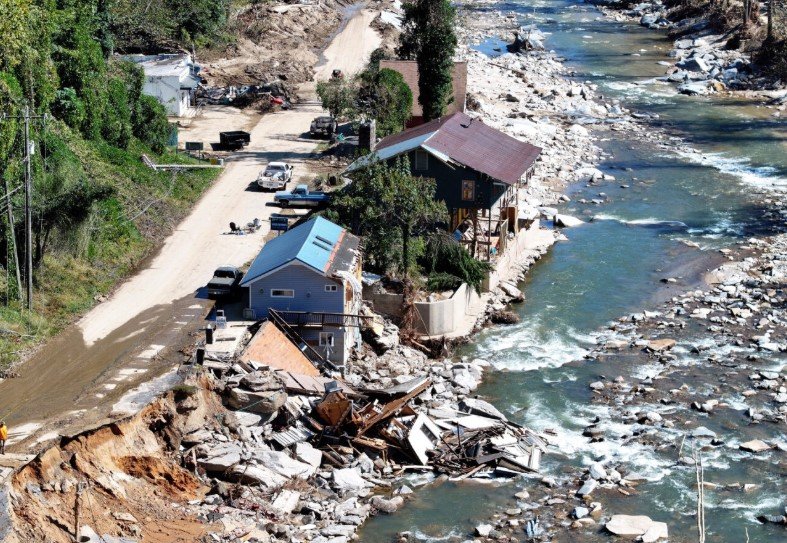Federal officials have approved an additional $49 million to aid Georgia’s ongoing recovery from Tropical Storms Helene and Debby, focusing on essential repairs and cleanup. This funding, announced on September 22, 2025, supports 111 state and local projects, helping communities rebuild roads, restore power, and clear debris after the devastating 2024 storms that caused widespread flooding and damage across the state.
Breaking Down the New Funding
The Federal Emergency Management Agency is directing these millions toward urgent needs in hard-hit areas. This comes as part of a broader effort to restore normalcy in Georgia, where storms Helene and Debby left behind billions in destruction, including ruined homes, downed power lines, and blocked roads.
Local governments and organizations will use the money for tasks like fixing infrastructure and removing hazards. Officials say this round of aid builds on previous allocations, ensuring that recovery moves forward without delays.
For instance, the funding covers costs at no less than 75 percent federal share, with some projects getting full reimbursement through public assistance programs. This setup eases the financial burden on state and local budgets strained by the disasters.
Communities in southern and coastal Georgia, which bore the brunt of the storms, stand to benefit most. Experts note that timely aid like this prevents long-term economic setbacks in agriculture and small businesses.

Major Grants and Their Impact
Several large grants highlight how the money will make a real difference on the ground. These allocations target specific problems caused by the storms, such as power outages and unsafe roads.
Here is a breakdown of some key grants:
- $4.7 million to Irwin Electrical Membership Corporation for repairing power lines, poles, and transformers in multiple counties.
- $4.2 million to the Georgia Department of Defense for search and rescue, temporary power, and security efforts.
- $3 million to Tattnall County for clearing over 254,300 cubic yards of debris and fallen trees.
- $1.7 million to the Georgia Department of Safety for traffic control and law enforcement support.
- $1.7 million to Pierce County for removing about 145,746 cubic yards of vegetative waste.
- $1.6 million to the Georgia Department of Transportation for emergency road fixes and traffic management.
These grants show a focus on immediate safety and long-term stability. Residents in affected areas report that such support has already helped restore electricity to thousands of homes.
Total Aid Reaches New Heights
Since the storms struck in 2024, federal assistance for Georgia has climbed significantly. As of September 2025, more than $798 million has flowed into the state for recovery, including earlier approvals totaling over $614 million by February.
This cumulative funding addresses a wide range of needs, from individual homeowner grants to large-scale infrastructure projects. For comparison, initial estimates pegged total storm damage in Georgia at over $10 billion, making this aid a vital piece of the puzzle.
| Category | Amount Approved | Purpose |
|---|---|---|
| Road Repairs | $150 million+ | Fixing highways and local streets damaged by flooding |
| Debris Removal | $200 million+ | Clearing fallen trees, wreckage, and hazards |
| Infrastructure Restoration | $250 million+ | Rebuilding power grids, water systems, and bridges |
| Emergency Measures | $100 million+ | Search and rescue, temporary housing, and security |
| Individual Assistance | $98 million+ | Aid for homeowners and renters |
This table illustrates how funds have been distributed so far, based on the latest federal reports. Officials expect more allocations as assessments continue.
The rise in total aid reflects growing federal commitment, especially after similar disasters in nearby states like North Carolina and Florida. Recent events, such as additional funding announcements in August 2025 for related storm recoveries, underscore a national push to bolster disaster resilience.
Challenges in Recovery Efforts
Despite the progress, Georgia faces ongoing hurdles in its recovery. Many rural areas still deal with limited access to services, and some residents await personal aid approvals.
Flooding from Helene and Debby displaced thousands and ruined crops, leading to economic losses that could linger for years. State leaders have called for faster processing of claims to help families rebuild.
Environmental experts warn that climate change may increase the frequency of such storms, prompting discussions on better preparedness. In recent months, Georgia has invested in flood barriers and early warning systems, partly funded by federal grants.
Community groups play a key role too, organizing volunteer drives and donation centers. These efforts complement government aid, showing a united front against disaster aftermath.
How Residents Can Access Help
Georgians affected by the storms have options for assistance. FEMA encourages applications through official channels, with deadlines extending into 2026 for some programs.
Individuals can apply for grants covering temporary housing, home repairs, and essential supplies. Businesses may qualify for low-interest loans to restart operations.
Key steps include documenting damages with photos and receipts, then submitting claims online or at recovery centers. As of now, over 100,000 applications have been processed statewide.
For unemployment aid related to the storms, the deadline is February 7, 2026. Free legal counseling is also available via hotlines for those navigating insurance and aid disputes.
Looking Ahead to Full Recovery
Experts predict that full recovery could take several years, but this latest funding injection speeds up the process. It aligns with national trends, where federal spending on disasters has risen 20 percent in the past five years due to more intense weather events.
State officials remain optimistic, pointing to successful rebuilds in areas like Valdosta and Savannah. They stress the importance of community involvement in long-term planning.
As Georgia heals, this aid serves as a reminder of federal support in times of crisis. Readers, if this story resonates with you, share it on social media and drop a comment below about your thoughts on disaster recovery efforts.
